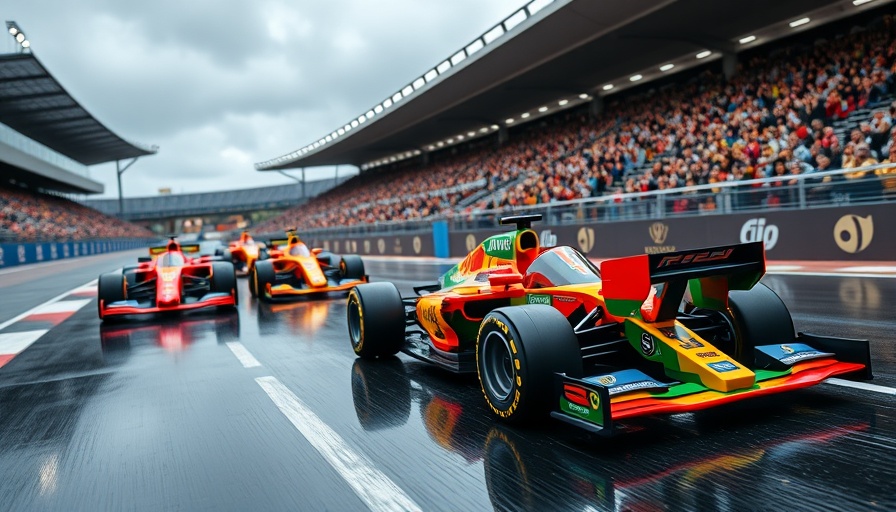
LEGO and Formula 1: A Partnership Built for Fun
In a brilliant showcase of creativity and innovation, LEGO unveiled ten life-sized Formula 1 cars during the Miami Grand Prix, blending the worlds of playful creativity and high-speed racing. Constructed from 4 million LEGO bricks over 22,000 hours, these impressive builds were not just for show; they were driven around the circuit in a colorful parade featuring iconic teams like McLaren and Ferrari. This collaboration between LEGO and F1 ignites the imagination—showing just how far creative engineering can take us, and surprisingly emphasizing the similarities between two seemingly different fan bases.
Demographics of F1 and LEGO: Bridging the Gap
An interesting insight from this venture is how it draws parallels between the traditional fan bases of F1 and LEGO. While F1 racing has often been associated with adrenaline junkies and high-stakes gamblers, LEGO’s charm lies in its broad appeal among children and adult hobbyists alike. According to Julia Goldin, LEGO Group’s chief product and marketing officer, the two brands found unexpected synergy in their passion to connect with audiences on different levels. Fans of both LEGO and Formula 1 share an underlying appreciation for engineering, precision, and creativity, providing a unique opportunity for crossover engagement.
The Technical Marvel: What Makes the Build Unique?
Each LEGO Formula 1 car weighs nearly double that of a real F1 vehicle, showcasing not just LEGO’s building prowess but also the engineering magic involved in real car design. While LEGO bricks typically aren’t designed for heavy-duty purposes, the building team employed industrial techniques, using a strong metal frame as the backbone and utilizing electric motors along with real Pirelli tires to ensure these builds could lap the track. Steering wheels made entirely of LEGO bricks added to the playful charm while maintaining functionality, spotlighting the blend of imagination and reality.
Aiming Beyond Entertainment: Educational Value through Play
This innovative project isn't merely a form of entertainment; it carries significant educational value. Emily Prazer, F1's chief commercial officer, emphasized that fans now have the chance to 'recreate and reimagine the world of Formula 1, brick by brick.' This transformative experience not only entertains but also educates young builders about the mechanics and technology behind race cars.
Moving Forward: Implications for Future Collaborations
The success of this initiative raises questions about what other unique partnerships could arise from the merging of enthusiasms. Imagine science museums collaborating with LEGO to create interactive exhibits, or LEGO itself taking inspiration from other sports to build life-sized replicas. As technology continues to evolve, so too can the ways fans engage with their cherished hobbies and interests, inspiring the next generation of creators and engineers worldwide.
Curiosity and Imagination: The Real Winner
In our fast-paced environment, LEGO's life-sized F1 cars remind us of the joy in creativity and the wonder of our imaginations. Such projects highlight the significance of fostering curiosity within younger audiences—the real victory lies in inspiring a passionate love for learning and building. It reinforces the notion that playful exploration can lead to exceptional results.
As this partnership continues to grow, it will be exciting to observe how both LEGO and Formula 1 leverage their shared audience to innovate further. The more connections we can create through shared interests, the richer our experiences will be, making us more well-rounded individuals.
Curious about how you can bring similar creativity into your business? Whether through client engagement strategies or exploring growth opportunities, consider the lessons from LEGO and F1 to inspire your path forward. Embrace collaboration, inventiveness, and above all, have fun!
 Add Row
Add Row  Add
Add 






Write A Comment